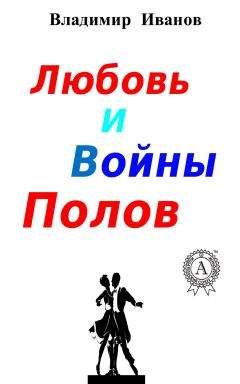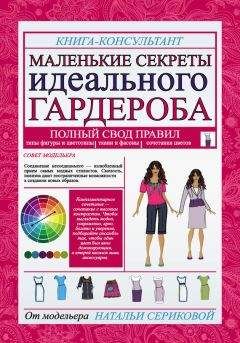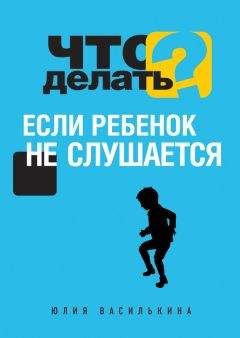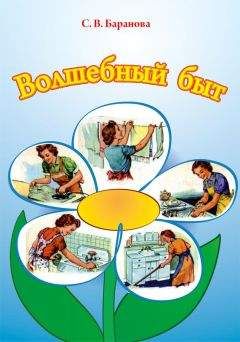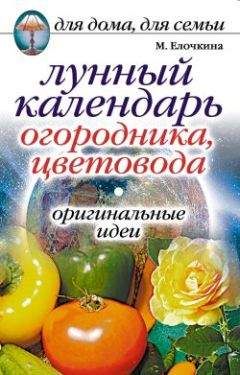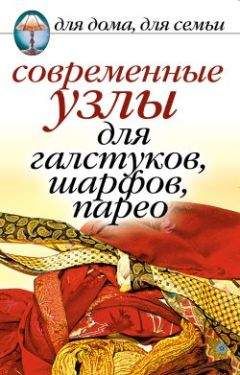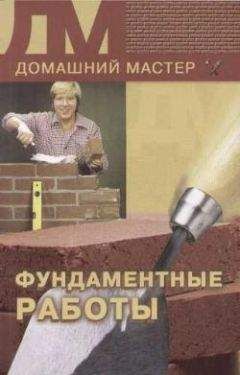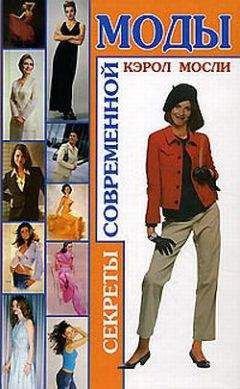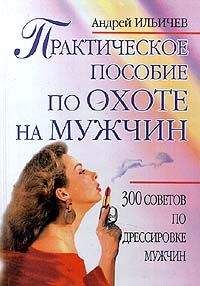Эльмира Хамматова - English for designers. Английский язык для дизайнеров
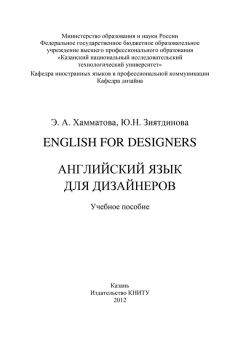
Все авторские права соблюдены. Напишите нам, если Вы не согласны.
Описание книги "English for designers. Английский язык для дизайнеров"
Описание и краткое содержание "English for designers. Английский язык для дизайнеров" читать бесплатно онлайн.
Учебное пособие способствует формированию коммуникативных способностей в профессиональной сфере дизайнеров и мотивированности обучающихся при изучении английского языка. Рассматривается история развития европейского костюма на протяжении XVIII-XXI веков, а также ассортимент одежды и ее стилевые особенности. Пособие содержит задания творческого и дискуссионного характера и задания, направленные на анализ конкретных ситуаций, с которыми может столкнуться будущий дизайнер.
4. Одежда производится в небольших количествах, чтобы гарантировать эксклюзивность, так что они довольно дорогие.
5. На сегодняшний день наибольшая часть одежды рассчитана на массовый рынок, в особенности для удобной и повседневной носки.
9. Ответьте на вопросы по тексту упражнения 4.
→ What is the function of fashion designers?
→ What kind of garments can you name ‘haute couture’?
→ What type of collections are presented each season during a period known as Fashion Week?
→ How does Myriam Chalek explain the designing process?
10. Перескажите текст упражнения 4, используя фразы в приложении.
Unit 2
FASHION HISTORY
1. Прочитайте следующие слова вслух и переведите их письменно:
cyclas, sleeves, transition, kittle, floor-length, ankle-length, abundant, doublets, hose, collars, opulence, farthingale, ornamentation, shoulders, waistlines, reveals, petticoats, foreparts, somber, stomachers, breeches, ensembles.
2. Прочитайте и переведите следующие глаголы:
to divert, to inaugurate, to enable, to include, to reflect.
3. Подберите эквивалентный перевод словосочетаний из колонки A в колонке В.
4. Прочитайте и переведите текст.
EUROPEAN STYLEClothing throughout the thirteenth century was very simple and varied very little between men and women. A loose-fitting fulllength gown with fitted sleeves worn with a narrow belt and a sleeveless coat called the cyclas was the norm. Until this point, very little diverted from Roman influence.
The fourteenth century inaugurated the Renaissance and brought the first major from simple draped shapes to fitted garments. Contoured seams and the start transition of tailoring techniques now enabled clothing to become more of a sheath around the body. Buttons and lacing allowed for an even closer fit. Women of the time wore an ankle- or floor-length chemise called a cotte, or kittle. The fitted version of the gown worn on top, called a cotehardie, often featured long hanging sleeves. In Europe throughout this period, fashion began to change at an unprecedented pace.
During the fifteenth century Europe experienced an abundant prosperity, the growth of the middle classes, and the development of a skilled workforce. This created an appetite for extravagances. Voluminous gowns called houppelandes featured floor-length sleeves and were worn with doublets, high collars, and hose. Headwear became more important and was trimmed with all manner of feathers and jewels. Everything became more complex and varied by region.
The sixteenth century was characterized by an increased opulence in fashion, most especially in England under Elizabeth I. Some of the atypical fashion details included the lace Tudor ruff, a hoop skirt called a farthingale, and rich surface ornamentation. In sharp contrast to the sloping narrow shoulders of the early 1500s, the Elizabethan court adopted shoulders that were high and wide with narrow sleeves reflecting French and Spanish styles. The shoulders were further enhanced by padded and jeweled shoulder rolls and accentuated by deep V-shaped waistlines. The V shape was mirrored by skirts that opened at the front to display petticoats or heavily decorated foreparts.
Fashion of the seventeenth-century baroque reveals a strong Puritan influence, evidenced in the natural, dark, somber colors and modest designs. Excessive ornamentation was discarded in favor of simpler broad lace and linen collars. Full slashed sleeves became very fashionable. Waistlines rose to create shorter bodices that were worn with contrasting stomachers. The period also witnessed the change from hose to breeches for men. A desire for uniformity became evident with the popularity of matching ensembles that speak to the contemporary suit. Under Louis XIV, the French began to focus on becoming leaders in the production of luxury products and fashionable clothing began to reflect the demands of the season and comfort.
(From the book “Form, Fit, and Fashion” by Jay Calderin)5. Ответьте на вопросы:
→ What does the word “cyclas” mean?
→ Can you describe the garments of Renaissance period?
→ What can you say about fashion of the 15th century?
→ What do you know about fashion in England under Elizabeth I?
→ Which styles in fashion prevail in the 17th century?
6. Закончите предложения, используя следующие слова: hose, headwear, kittle, shoulder, waistlines, lace.
→ Women of the time wore an ankle- or floor-length chemise called a cotte, or …
→ … became more important and was trimmed with all manner of feathers and jewels.
→ The shoulders were further enhanced by padded and jeweled … rolls.
→ … rose to create shorter bodices that were worn with contrasting stomachers.
→ The period also witnessed the change from … to breeches for men.
→ Excessive ornamentation was discarded in favor of simpler broad … and linen collars.
7. Прочитайте и переведите текст письменно.
FASHION HOUSES AND THEIR ADSFashion houses are the companies behind the bigger name designers. They’re considered houses because the company bears the designer’s name, even after the designer has retired and someone else has taken over designing the label. The fashion houses influence trends and, consequently, sales through the use of advertising. If you look through a fashion magazine, you see that most of the pages are ads. These ads, which are just as visually interesting and informative as the editorial pages, can have quite an impact. For example, department stores didn’t want to stock designer jeans back in the 1980s, but the ads placed by the jeans companies created the public demand, and it wasn’t long before those jeans were in every store.
8. Переведите следующий текст.
Анализ целостности ансамбляАнализ целостности ансамбля проводится на примере костюма (представленного на рис. слева).
В этой модели нельзя убрать отделку в плечевой части из цветного крепдешина бежевого цвета, так как сразу нарушится целостность композиции.
Если убрать один из главных элементов в костюме, а именно цветную драпировку, то исчезнет один из сильных контрастов, который проявляется в сочетаниях основного и отделочного материалов, их цветовой гамме и фактуре поверхностей. При всем этом, костюм становится неполным и скучным.
Однако, умелое использование материалов, декоративных элементов в головном уборе позволяет добиваться выразительности представленного костюма и его эстетической ценности. При изъятии из ансамбля шляпы и легко драпирующегося отделочного материала изменится форма модели (расширенная в плечевой части и зауженная в линии талии).
Нарушается связь форм, если убрать из костюма головной убор и дамскую сумочку.
На основе анализа внешней формы костюма можно заключить, что представленная композиция является законченной и достаточно целостной, так как соблюдаются меры контраста.
9. Прочитайте и переведите цитату. Выучите высказывание наизусть.
"Fashion is not something that exists in dresses only. Fashion is in the sky, in the street, fashion has to do with ideas, the way we live, what is happening."
Coco Chanel(French fashion designer, 1883-1971)10. Перескажите текст упражнения 4, используя фразы в приложении.
Unit 3
EIGHTEENTH CENTURY
1. Прочитайте следующие слова вслух и переведите их письменно:
robe, pleats, lavish, conical, panniers, sleeves, petticoat, bodice, redingote, silhouette, neoclassical, acumen, austerity, self-promotion, transnational, dressmaking, democracy, dissemination, bell-shaped, trumpet-shaped, hoops, empire, bust, regency, equal, inspiration, ensemble.
2. Прочитайте и переведите следующие глаголы:
to popularize, to politicize, to encase, to invert, to exaggerate, to dethrone, to unconfined, to categorize.
3. Подберите эквивалентный перевод словосочетаний из колонки A в колонке В.
4. Прочитайте и переведите текст.
EIGHTEENTH CENTURYThe eighteenth century saw fashion celebrated as culture. One popular garment was contouche, a loose robe with large back pleats so often painted by Antoine Watteau that they came to be called Watteau pleats. Fashion icon of the day Madame de Pompadour popularized the lavish rococo style. At this point, by mid-century, the women’s torso was encased in an inverted conical corset with sleeves becoming bell- or trumpet-shaped, and the full-skirted silhouette widened further. Hoop skirts worn in the 1730s and 1740s give way to panniers, or side hoops. By 1790, although skirts remained fill, the exaggerated form had disappeared, and a fashion developed for the pouter-pigeon front, with many layers of fabric pinned to a bodice.
Riding habits and men’s tailoring found their way into women’s fashion in the second half of the century by way of the popular German traveling suit called a Brunswick gown, a two-piece ensemble that featured a hooded jacket with split sleeves and a matching petticoat; the caraco, a jacket-like bodice worn over a petticoat an based on the dress of servants and country women; and the joseph, a coat dress styled after the riding coat (adopted by the French as a redingote). After the French and American Revolutions fashion became politicized and austerity came to equal democracy. The end of the century gave regency way to an unconfined long silhouette categorized as directoire, empire or regency, with a high waistline located under the bust. Deriving its inspiration from the Greeks and Romans, this neoclassical style took Europe into the early 1800s.
One figure of special note in the eighteenth century was the dressmaker and stylist Rose Bertin. Bertin, who would later became known as the Ministre de la Mode, was instrumental in generating a passion for the latest fashions thanks to her work for the French queen Marie Antoinette, whom she dressed from 1770 until she was dethroned in 1792. Through her clever, self-promotion, business acumen, and transnational reach, Bertin helped to turn dressmaking toward a modern model of the fashion business. Contributing, too, to the wide dissemination of fashion trends by the end of the century was the rise in popularity of fashion plates and journals.
5. Ответьте на вопросы по тексту упражнения 4.
→ Who popularized rococo style?
→ What can you say about the silhouette in the end of the 18th century?
→ What happened after the French and American Revolutions?
6. Прочитайте и переведите следующую цитату:
"It pains me physically to see a woman victimized, rendered pathetic, by fashion."
Yves Saint Laurent(French fashion designer, b. 1936)7. Прочитайте, переведите текст письменно и озаглавьте его.
Figure. Robe à la française, France, block-printed cotton, c. 1770. Los Angeles County Museum of Art
The sack-back gown or robe à la française was a women's fashion of the 18th century. At the beginning of the century, the sack-back gown was a very informal style of dress. At its most informal, it was unfitted both front and back and called a sacque or contouche. By the 1770s the sack-back gown was second only to court dress in its formality. This style of gown had fabric at the back arranged in box pleats which fell loose from the shoulder to the floor with a slight train. In front, the gown was open, showing off a decorative stomacher and petticoat. It would have been worn with a wide square hoop or panniers under the petticoat. Scalloped ruffles often trimmed elbow-length sleeves, which were worn with separate frills called engage antes.
The loose box pleats which are a feature of this style are sometimes called Watteau pleats from their appearance in the paintings of Antoine Watteau. The various Watteau terms, such as Watteau pleat, Watteau back, Watteau gown etc., date from the mid19th century rather than reflecting authentic 18th century terminology, and normally describe 19th and 20th century revivals of the sack-back.
(From http://en.wikipedia.org)8. Прочитайте и переведите следующие цитаты:
→ «Мода – это то, что выходит из моды». (Коко Шанель).
→ «Мода проходит, стиль остается». (Коко Шанель).
→ «Самая важная деталь в платье – женщина, которая его носит». (Ив Сен Лоран).
→ «Хорошо одетый человек тот, кто считается с собой и с другими». (Пьер Карден).
→ «Я люблю, когда мода выходит на улицу, но не допускаю, чтобы она приходила оттуда». (Коко Шанель).
Подписывайтесь на наши страницы в социальных сетях.
Будьте в курсе последних книжных новинок, комментируйте, обсуждайте. Мы ждём Вас!
Похожие книги на "English for designers. Английский язык для дизайнеров"
Книги похожие на "English for designers. Английский язык для дизайнеров" читать онлайн или скачать бесплатно полные версии.
Мы рекомендуем Вам зарегистрироваться либо войти на сайт под своим именем.
Отзывы о "Эльмира Хамматова - English for designers. Английский язык для дизайнеров"
Отзывы читателей о книге "English for designers. Английский язык для дизайнеров", комментарии и мнения людей о произведении.








